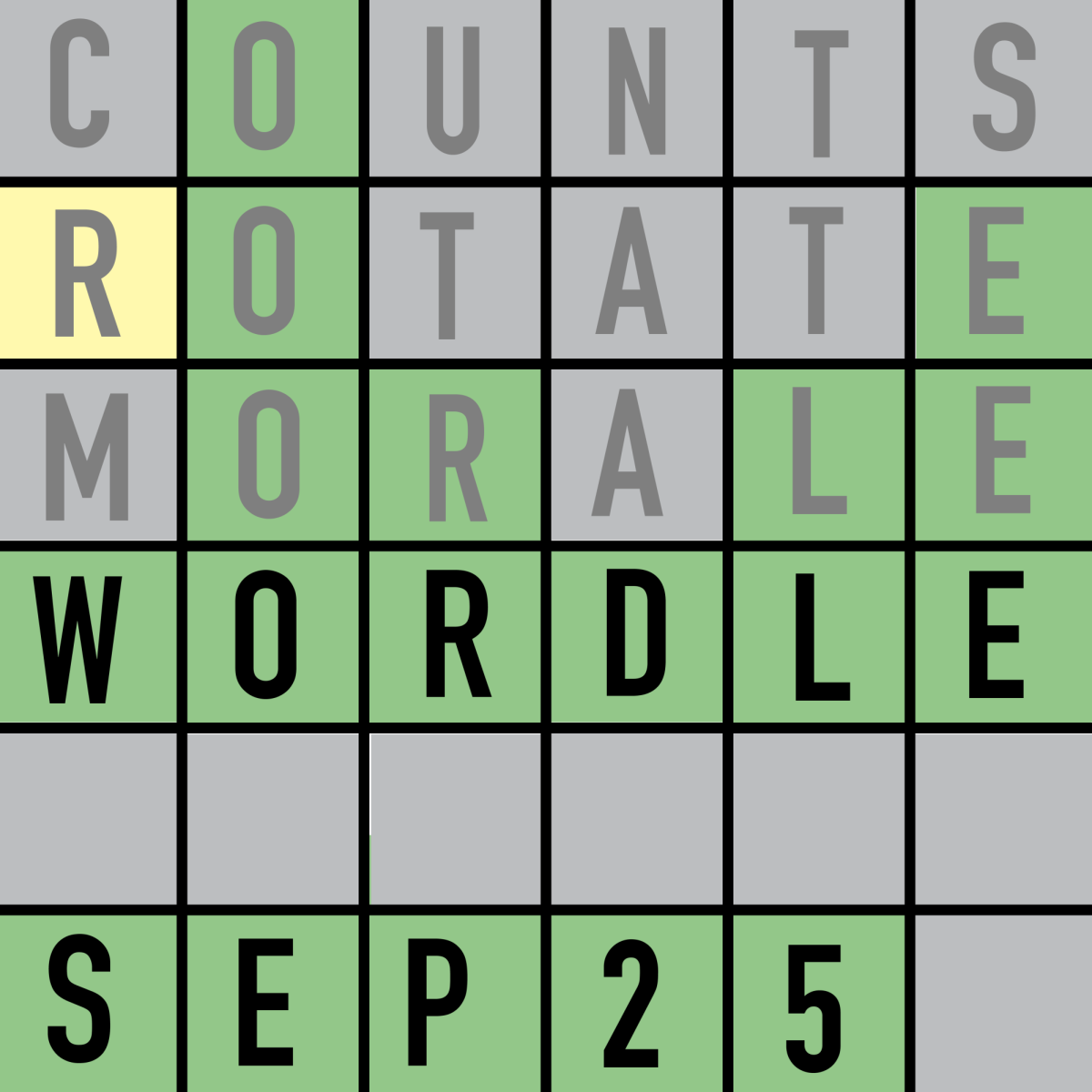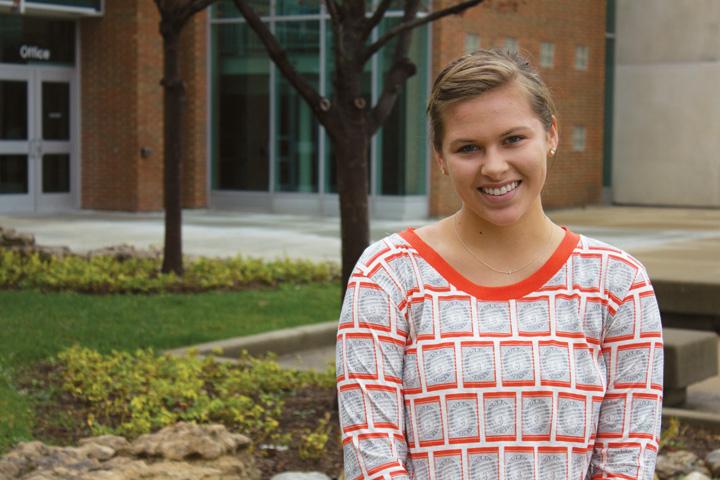 From Feb. 13 to March 24, I did not consume any meat, dairy, eggs, butter, gelatin, whey or honey. After deciding to try going vegan for 40 days, I embarked on this venture with my heart full of love for all of the animals I’d be saving and my pantry full of soybeans, vegetable soups and lots of peanut butter. But let’s back up a bit. This whole adventure really started about two months earlier when I watched the documentary “Vegucated.”
From Feb. 13 to March 24, I did not consume any meat, dairy, eggs, butter, gelatin, whey or honey. After deciding to try going vegan for 40 days, I embarked on this venture with my heart full of love for all of the animals I’d be saving and my pantry full of soybeans, vegetable soups and lots of peanut butter. But let’s back up a bit. This whole adventure really started about two months earlier when I watched the documentary “Vegucated.”
The film follows three omnivores who agree to go vegan for six weeks, as they reap the benefits and overcome the challenges of a plant-based diet in today’s meat-and-cheese-obsessed society. Along the way, they uncover slaughterhouse secrets and learn about what they’re actually putting into their bodies. The film brought tears to my eyes, yet opened them at the same time. How could I have lived 18-and-a-half years almost completely clueless to what I’ve been consuming? Thus, my goal for this column is not only to get you to consider going vegan or vegetarian, but also to make sure you know how that cheeseburger arrived on your plate and its effects on you and on the rest of the world.
According to the nonprofit organization Vegan Outreach, federal law requires that mammals are stunned before they are slaughtered. This is typically done by sending an electric current through the animal, or by a captive bolt gun shooting a rod into the animal’s brain. For birds, however, there is no federal law mandating this “ethical” treatment. Strung up by their feet, chickens’ and turkeys’ heads are dunked in an electrified water basin; however, several thousand birds survive the electrocution every year and arrive fully conscious to be dropped into the scalding tanks where they inevitably will die by drowning or literally being cooked alive, and these animals won’t look like the fluffy little barn animals from “Babe.” No, they’ll have untreated oozing sores and tumors, they’ll be genetically modified to produce more meat to the point where they can barely move or breathe and they’ll be covered in feces, dirt and bugs from the inhumane living conditions.
As much as you may like to forget it, every day thousands of animals are born with the sole purpose of dying. Your cheeseburger had a face and a heart and a brain, and when it was finally put out of the miserable conditions it had lived its whole life in, I can promise you it felt pain. In the slaughterhouses, animals are not treated as living creatures, but as products. In an assembly line fashion, animals are murdered, disassembled part by part, processed and packaged into neat little squares or slices.
However, if emotional appeal isn’t really your thing, let’s look at this from an environmental standpoint. Research at the University of Chicago shows that being vegan is the number-one most effective effort in the fight against global warming. You would save more water by not eating one pound of meat than by forgoing showers for six months. You would save 20 times the amount of fossil fuel by choosing a soy-based entrée over meat. Overall, a vegan is responsible for the release of 1.5 fewer tons of carbon dioxide into the atmosphere than a meat-eater every year.
Not only is going vegan one of the best ways to fight global warming, but also according to the Academy of Nutrition and Dietetics, vegetarians and vegans enjoy a lower risk of death from heart disease, lower rates of type two diabetes and lower body mass indexes. Furthermore, according to the Food and Drug Administration, the meat supply in the United States contains residue of 500 to 600 chemicals, which have given rise to cancer rates, obesity and thyroid disease. The air and water pollution from slaughterhouses have been linked to brain damage, depression and birth defects. The list goes on and on.
There is nothing ethical or beneficial about any part of the meat production process. It is bad for the animals, bad for you and bad for the environment. So try going vegan for just one day. Try ordering a vegetarian meal the next time you’re at a restaurant. Just try it; a little can go a long way. You have all the information—the choice is yours. I’ve made mine.
Lindsey Walker is a reporter for the HiLite. The views in this column do not necessarily reflect the views of the HiLite staff. Reach her at [email protected].




























![Keep the New Gloves: Fighter Safety Is Non-Negotiable [opinion]](https://hilite.org/wp-content/uploads/2024/12/ufcglovescolumncover-1200x471.png)






!["Wicked" poster controversy sparks a debate about the importance of accuracy versus artistic freedom [opinion]](https://hilite.org/wp-content/uploads/2024/11/riva-perspective-cover-1200x471.jpg)









































![Review: “We Live in Time” leaves you wanting more [MUSE]](https://hilite.org/wp-content/uploads/2024/12/IMG_6358.jpg)
![Review: The premise of "Culinary Class Wars" is refreshingly unique and deserving of more attention [MUSE]](https://hilite.org/wp-content/uploads/2024/12/MUSE-class-wars-cover-2.png)
![Introducing: "The Muses Who Stole Christmas," a collection of reviews for you to follow through winter [MUSE]](https://hilite.org/wp-content/uploads/2024/12/winter-muse-4.gif)
![Review: "Meet Me Next Christmas" is a cheesy and predictable watch, but it was worth every minute [MUSE]](https://hilite.org/wp-content/uploads/2024/11/AAAAQVfRG2gwEuLhXTGm3856HuX2MTNs31Ok7fGgIVCoZbyeugVs1F4DZs-DgP0XadTDrnXHlbQo4DerjRXand9H1JKPM06cENmLl2RsINud2DMqIHzpXFS2n4zOkL3dr5m5i0nIVb3Cu3ataT_W2zGeDAJNd_E-1200x884.jpg)
![Review: "Gilmore Girls", the perfect fall show [MUSE]](https://hilite.org/wp-content/uploads/2024/11/gilmore-girls.png)
![Review in Print: Maripaz Villar brings a delightfully unique style to the world of WEBTOON [MUSE]](https://hilite.org/wp-content/uploads/2023/12/maripazcover-1200x960.jpg)
![Review: “The Sword of Kaigen” is a masterpiece [MUSE]](https://hilite.org/wp-content/uploads/2023/11/Screenshot-2023-11-26-201051.png)
![Review: Gateron Oil Kings, great linear switches, okay price [MUSE]](https://hilite.org/wp-content/uploads/2023/11/Screenshot-2023-11-26-200553.png)
![Review: “A Haunting in Venice” is a significant improvement from other Agatha Christie adaptations [MUSE]](https://hilite.org/wp-content/uploads/2023/11/e7ee2938a6d422669771bce6d8088521.jpg)
![Review: A Thanksgiving story from elementary school, still just as interesting [MUSE]](https://hilite.org/wp-content/uploads/2023/11/Screenshot-2023-11-26-195514-987x1200.png)
![Review: "When I Fly Towards You", cute, uplifting youth drama [MUSE]](https://hilite.org/wp-content/uploads/2023/09/When-I-Fly-Towards-You-Chinese-drama.png)
![Postcards from Muse: Hawaii Travel Diary [MUSE]](https://hilite.org/wp-content/uploads/2023/09/My-project-1-1200x1200.jpg)
![Review: "Ladybug & Cat Noir: The Movie," departure from original show [MUSE]](https://hilite.org/wp-content/uploads/2023/09/Ladybug__Cat_Noir_-_The_Movie_poster.jpg)
![Review in Print: "Hidden Love" is the cute, uplifting drama everyone needs [MUSE]](https://hilite.org/wp-content/uploads/2023/09/hiddenlovecover-e1693597208225-1030x1200.png)
![Review in Print: "Heartstopper" is the heartwarming queer romance we all need [MUSE]](https://hilite.org/wp-content/uploads/2023/08/museheartstoppercover-1200x654.png)




